When Dr Sarah Wollaston was elected to Parliament in 2010, she became the first female MP for the Totnes constituency.
But 100 years ago, she wouldn’t even have been able to vote.
On February 6, 1918, the first Act giving women the power to vote was passed in Parliament.
One hundred years ago, the Representation of the People Act gave women of property over the age of 30 the right to vote, which signifies an important first step for female suffrage in the UK.
The Bill was passed by an overwhelming majority in the House of Commons (365 for to 55 against), after years of campaigning from two main groups, the suffragists and the suffragettes.
Both groups were eager for equality, starting with a woman’s right to vote, but they used different methods of protest. The suffragists, mainly formed of middle class women, hoped to reach their ambitions using peaceful tactics such as non-violent demonstrations, petitions and the lobbying of MPs.
The suffragettes, a name given to them by The Daily Mail, were born out of the suffragists. Led by Emily Pankhurst, the group believed it would take active organisation from young working class women to draw attention to the cause and from 1912 onwards they began to use more militant methods such as law-breaking, violence and hunger strikes.
The protests by peaceful and militant groups alike certainly reached the South Hams. Newspaper and photographic records show evidence of local meetings and groups dedicated to the cause.
A local newspaper, The Kingsbridge Gazette and South Devon Advertiser ran a piece on April, 3, 1914, about a public meeting held in Kingsbridge under the organisation of the National Union of Women’s Suffrage Societies, part of the South Western Federation.
The “attendance was so large” that the meeting was moved from the smaller museum room to the adjoining “large hall”. Mrs Whalley of Kendal, Westmoreland was invited to speak after Miss Muriel Matters couldn’t attend.
The Rev. J. H. Sandford who presided over the meeting claimed that the gathering was not in support of the “certain noisy women who were bringing disgrace upon their sex”.
The newspaper reported: “He could not express what he thought of the most abominable, disgusting and utterly disgraceful conduct of certain people who were going abut burning letters, one of which might be to inform a young man of his mother’s death or ruthlessly hacking to pieces a work of art of surpassing beauty and priceless value” the paper reported.
“What a pity it was that the militant suffragettes could not see what an immense amount of harm they were doing to the cause they wished to forward” the Rev was reported to have said.
“No one would contend that women were less intelligent or less capable of wise judgement than men were. Where was the justice, to say nothing of logic, of the sex disqualification? Would it not be just silly to say that, because people had red hair or blue eyes, they should not be allowed to vote.”
He continued to explain that the inclusion of women voting in local politics had been “an influence for good”. The story then followed with a report of Mrs Whalley’s address to the group.
She explained the group was meeting to talk about one part of the suffrage movement, the struggle for the vote, but she reminded the attendees that this was only one part of the movement.
“Women were bound to win and even their opponents admitted it,” Mrs Whalley was quoted as saying. “The question was: ’Do the women of this country need the protection of the vote?’ she asserted, ’say yes and many men say yes.’
"The vote is a tool which those who band themselves together can get the things they want. So the vote was a symbol, a protection, and a tool.”
The report continued to explain the reasons given against the movement. “The reason they gave was that women had not got physical force” and couldn’t become “soldiers or sailors to fight their countries battles”.
“The funny side of it was that it was not the man who did fight who got the vote. It was the man who paid the man who fought who got the vote.
“There were more than five millions of women in the labour market who had their living to make. Some people said that women’s place was at home.
“She agreed, but she wanted to know who was going to find the home. There were five millions of women in the country who, if they wanted a home, had to get out and make it, who had to go into the labour market and work in competition with men. They had over five millions of women unprotected, without the vote.”
She highlighted: “God had given women intelligence” but “at present in this great nation of ours they had the man’s point of view accentuated anywhere and everywhere”.
In her concluding remarks, Mrs Whalley said “she knew of nothing that had been so good for the womanhood of the nation as this long struggle for the vote”. “Women had learned things that they would not have learned in any other way.”
Meetings like this one helped to pass the bill in 1918 and increase the size of the electorate from 7.7million to 21.4million. After the 1918 Act, women counted for 43 per cent of the electorate.
However women were still not politically equal to men because men could vote from the age of 21. The age 30 requirement was put in place to ensure women did not become the majority of the electorate. If women had been enfranchised based upon the same requirements as men, they would have been in the majority, due to the loss of men in the war.
The information comes from the Cookworthy Museum’s archive of local papers which can be viewed in the Local Heritage Resource Room at the museum, open to the public all year round.
This year the museum is celebrating local women to tie in with the 100 year anniversary that allowed some women the vote. They are doing an exhibition on Maragaret Lorenz, the first female head teacher in Devon and the former chairman of the museum. The exhibition opens on Monday, March 26.
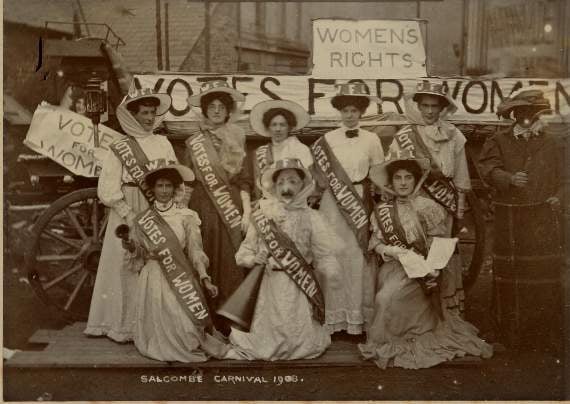
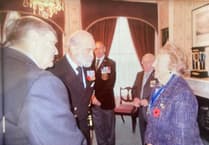
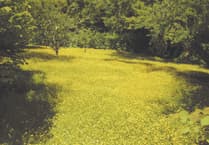
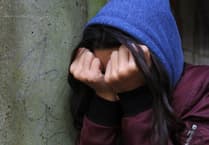
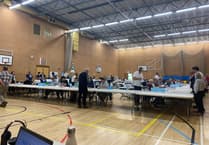
Comments
This article has no comments yet. Be the first to leave a comment.